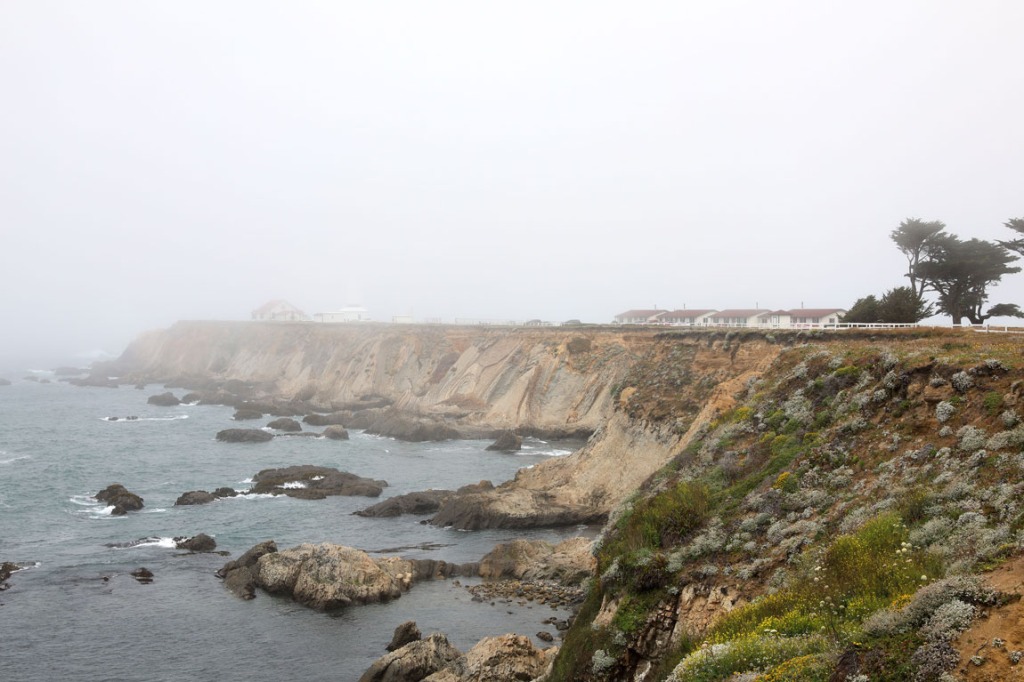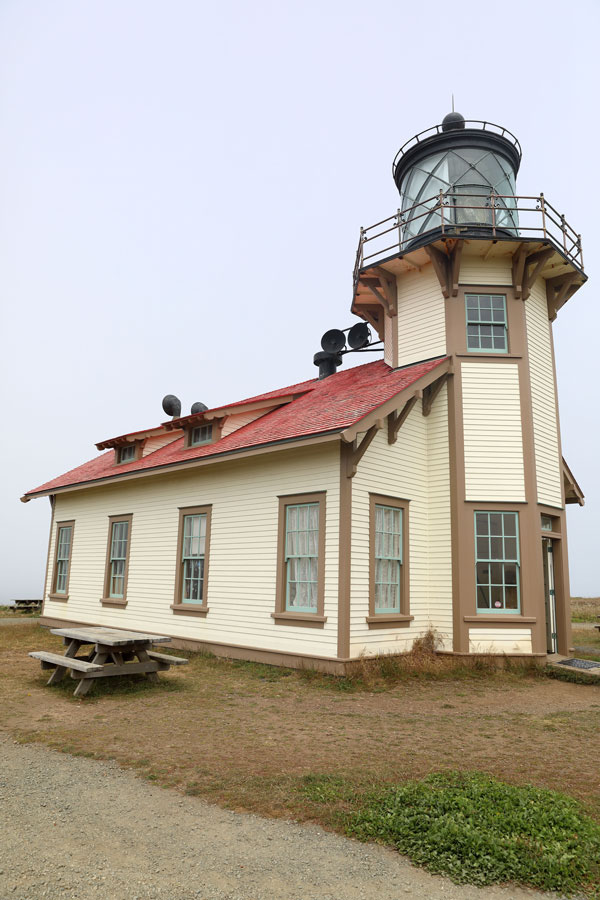The tower rose into the fog.
We couldn’t see it until we were practically on top of it.
A dense fog blanketed everything that morning – the farmland, the narrow winding road, the ocean, and the point where Point Arena Lighthouse stood.
We walked up the tower to the lantern room. (It’s only 145 steps to the top, which is not bad at all compared to some lighthouses we’ve been too.) Since the Fresnel lens is on display in the museum (located in the fog signal building) people area allowed to enter the lantern room where the 1st Order Fresnel lens once stood and peer through the floor to ceiling windows. This is the only lighthouse where I’ve ever been allowed up to that room, so it was an exciting experience. And on such a foggy morning as this one, being in the lantern room was like being in the clouds.
The view of the ocean was obstructed. The view of the rocks was difficult to see. The view of the cliffs was just visible enough. And I couldn’t imagine being a lighthouse keeper or a captain out at sea in this fog. I kept squinting, trying to see something, but there was really nothing to see except the thick clouds of fog hanging around us.
We left the lantern room and went out on the ledge to have a look around. The wind cut through our sweaters and we couldn’t hear each other talk unless we were talking directly into the other’s ear. Particles of water sprayed on our coats, which was either from the ocean below or the dampness of the fog. The ocean, rocks, and cliffs were a bit more visible from here, but the fog still obscured the view.
It was amazing being that high, and seeing all we could see (as this is the only California lighthouse we’ve been to where they allow people to walk up the tower), but, once again, I couldn’t imagine being a lighthouse keeper in these conditions.
Point Arena Lighthouse was first constructed in 1870 out of brick-and-mortar. When the 1906 San Francisco earthquake hit, it damaged the lighthouse and the keeper’s house to the point where they both had to be demolished and rebuilt.
The current Point Arena Lighthouse and keeper’s house are different than those originally built. The keeper’s homes are split into separate cottages while the lighthouse features a wider base and steel reinforcement rods encased in concrete, in the hopes that it will withstand an earthquake. This new lighthouse was operational by 1908.
In the late 1970s the light was automated and about twenty years later, in the early1990s, Point Arena Lighthouse was placed on the National Register of Historic Places.
Once down and out of the lighthouse, we walked the grounds. There’s a lot of beautiful plants and flowers there. We also saw a Great Blue Heron. He was on the path in front of us, standing proud and tall, until he flew away. His wingspan was great and he was a beauty as he soared through the fog, landing near the cliffs in a patch of plants and wildflowers.
And I can’t forget to mention the resident lighthouse cat – Arena Mina. She is one of the sweetest, cutest, and most helpful cats I’ve met.
Whether a foggy day or a sunny day, I believe Point Area Lighthouse is worth the visit. It’s full of history and the grounds are abundant in beauty. Plus, it’s the only California lighthouse, that I know of, where you’re actually allowed to walk up the tower…and up into the lantern room. And if none of that is of interest, then, at least pay a visit to Arena Mina. She’s just as lovely as Point Arena Lighthouse itself.
To see more photos of Point Arena Lighthouse and Point Area, you may do so by going here.




